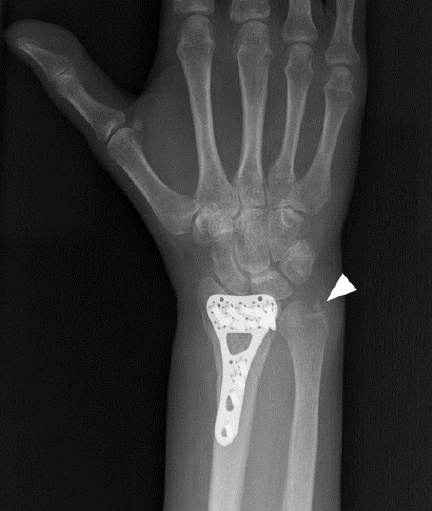Indexed in: ESCI, Scopus, PubMed,
PubMed Central, CAS, DOAJ, KCI
PubMed Central, CAS, DOAJ, KCI
FREE article processing charge

Articles
- Page Path
- HOME > J Yeungnam Med Sci > Volume 41(1); 2024 > Article
-
Image vignette
Dynamic ultrasound examination of the median nerve during follow-up after wrist fracture/surgery -
Ahmet Furkan Çolak
 , Ayşe İrem Yeşiloğlu
, Ayşe İrem Yeşiloğlu , Alpaslan Fatih Kaynar
, Alpaslan Fatih Kaynar , Bayram Kaymak
, Bayram Kaymak , Levent Özçakar
, Levent Özçakar
-
Journal of Yeungnam Medical Science 2024;41(1):56-57.
DOI: https://doi.org/10.12701/jyms.2023.01291
Published online: January 5, 2024
Department of Physical Medicine and Rehabilitation, Hacettepe University Medical School, Ankara, Turkiye
- Corresponding author: Ahmet Furkan Çolak, MD Department of Physical Medicine and Rehabilitation, Hacettepe University Medical School, Zemin Kat, FTR AD, Sıhhıye, Ankara 06230, Turkiye Tel: +90-312-3094142 • Fax: +90-312-3105769 • E-mail: afcolak2096@gmail.com
• Received: November 25, 2023 • Revised: December 8, 2023 • Accepted: December 21, 2023
Copyright © 2024 Yeungnam University College of Medicine, Yeungnam University Institute of Medical Science
This is an Open Access article distributed under the terms of the Creative Commons Attribution Non-Commercial License (http://creativecommons.org/licenses/by-nc/4.0/) which permits unrestricted non-commercial use, distribution, and reproduction in any medium, provided the original work is properly cited.
- 546 Views
- 36 Download
-
Ethical statements
Informed patient consent was obtained from both patients included in the study.
-
Conflicts of interest
No potential conflict of interest relevant to this article was reported.
-
Funding
None.
Article information
Supplementary materials
Supplementary Fig. 1.
Video 1.
Video 2.
Video 3.
Fig. 1.Ultrasound imaging of the median nerve at the volar wrist. (A) Short-axis view depicts the close relationship between the bifid median nerve (white arrows) and the metal plate (arrowheads). (B) Long-axis view clearly shows the swollen median nerve (red vs. blue arrows) distal to compression (black arrow) by the underlying metal plate (arrowhead). Insets show the transducer’s position. ft, flexor tendon.


Fig. 2.Anteroposterior radiograph shows the metal plate in the radius and the fracture of the ulnar styloid (arrowhead).


- 1. Ricci V, Ricci C, Cocco G, Gervasoni F, Donati D, Farì G, et al. Histopathology and high-resolution ultrasound imaging for peripheral nerve (injuries). J Neurol 2022;269:3663–75.ArticlePubMedPDF
- 2. Lee JH, Kim KJ, Baek JH. Factors affecting the occurrence of late median nerve neuropathy after open reduction and volar locking plate fixation of distal radius fracture. Orthopedics 2021;44:e367–72.ArticlePubMed
- 3. Yeh KT, Lee RP, Yu TC, Wang JH, Liu KL, Peng CH, et al. Risk factors for carpal tunnel syndrome or trigger finger following distal radius fracture: a nationwide study. Sci Rep 2020;10:469.ArticlePubMedPMCPDF
- 4. Ricci V, Soylu AR, Özçakar L. Artifacts and artistic facts: a visual simulation for ultrasound training. Am J Phys Med Rehabil 2019;98:521–5.ArticlePubMed
- 5. Mezian K, Ricci V, Güvener O, Jačisko J, Novotny T, Kara M, et al. EURO-MUSCULUS/USPRM dynamic ultrasound protocols for wrist and hand. Am J Phys Med Rehabil 2022;101:e132–8.ArticlePubMed
References
Figure & Data
References
Citations
Citations to this article as recorded by 


 E-Submission
E-Submission Yeungnam University College of Medicine
Yeungnam University College of Medicine PubReader
PubReader ePub Link
ePub Link Cite
Cite



